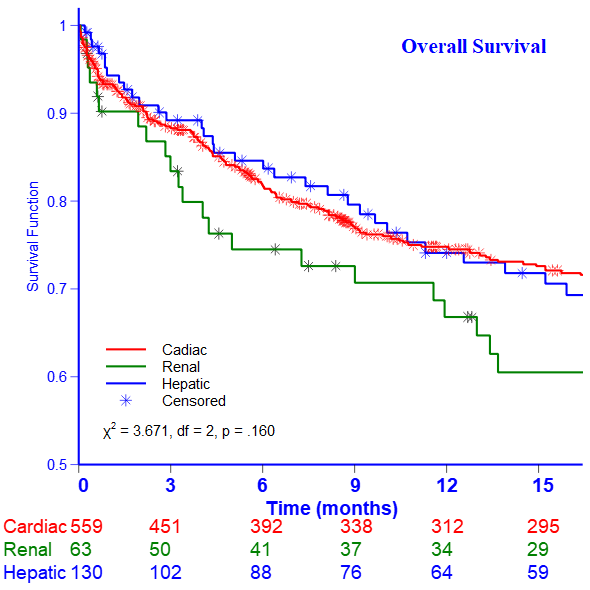Abstract
Introduction
Non-malignant pleural effusions (PE) are underrepresented in the literature despite their high prevalence. We report data collected on organ-failure related effusions (heart, renal and hepatic) by the ICE project.
Aims
To report PE characteristics, prognostic features, refractory PE features, interventions and related complications in this cohort.
Methods
15 sites in 10 countries reported anonymised, retrospective data from 2004-2021. 755 cases were analysed: 560 cardiac, 131 hepatic and 64 renal.
Results
Mean age was 74.3 (62% male). Commonest symptoms were dypsnoea (89%) and cough (32%). 302/755 (40%) PE were bilateral, 304 (40%) right- and 151 (20%) left-sided. Predominant cytological type was mesothelial 227/755 (30%) or lymphocytic 189 (25%). Overall 1 year survival was 73%. Renal and neutrophil-predominant PE conferred poorer prognosis. Atrial fibrillation was associated with survival benefit in cardiac PE. 383/755 (50.1%) of effusions recurred. Most PE were managed medically - 25% underwent repeated thoracentesis, 9% chest drainage and 5% indwelling pleural catheter insertion. The commonest management complication was electrolyte disturbance in 70/755 (8%).
Conclusions
This large multinational study shows organ failure related PE, particularly renal PE, confer poor prognosis. Recurrence is common, requiring repeated interventions, but complication rates are low.